
Shrubs Around Las Vegas, Vegetation Around Las Vegas
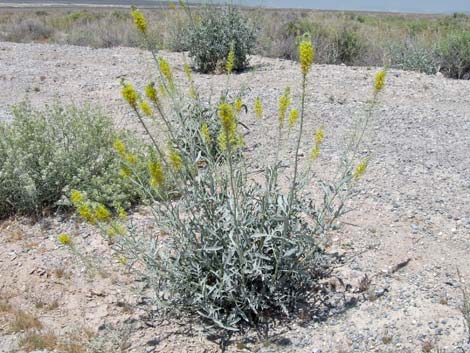 |
General: Desert Princesplume (Stanleya pinnata) is a perennial forb or subshrub that develops tall (to 5 ft) stalks topped with a showy array of yellow flowers. The leaves are long and oval, but deeply lobed, especially towards the base of the plant. Upper leaves are narrow and may be entire or few-lobed. Petal claws are hairy. In contrast, Panamint Princesplume (Stanleya elata), has broad, entire leaves and the petal claws are smooth. Desert Princesplume is a fairly common component of vegetation communities in dry, heavy soils on desert flats and on bajadas into the lower mountains in the Lower Sonoran (Creosote-Bursage Flats) and Upper Sonoran (Mojave Desert Scrub) life zones. Princesplume tends to grow on selenium rich soils and accumulates the mineral in the leaves, making the plant toxic to humans and livestock. Around Las Vegas, look for Desert Princesplume on the edges of desert mudflats in places such as Desert National Wildlife Refuge, Death Valley National Park, Lake Mead National Recreation Area, Tule Springs Fossil Beds National Monument, and Gold Butte National Monument. Can be found on gravel soils. Family: Mustard (Brassicaceae); Other Names: Prince's Plume |
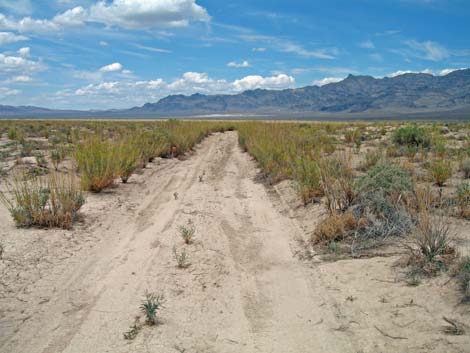 Desert Princesplume lining a road in typical playa-basin habitat |
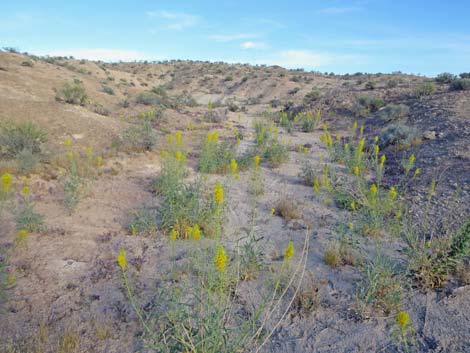 Desert Princesplume in a wash |
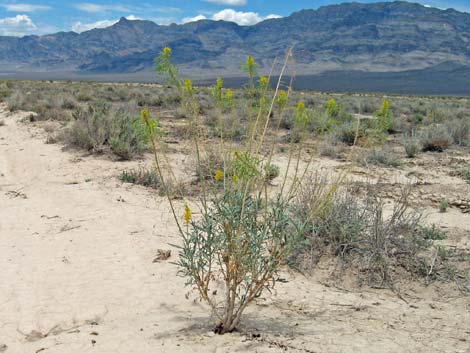 |
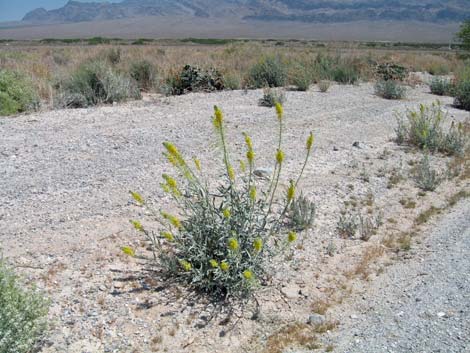 |
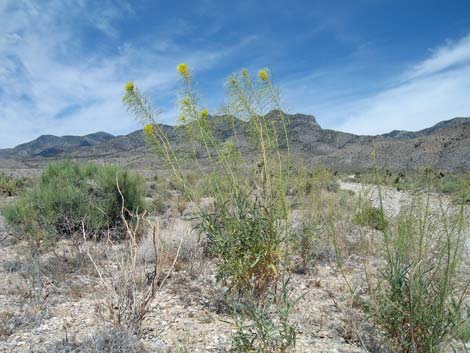 |
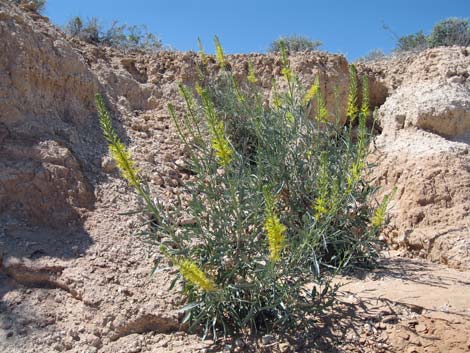 |
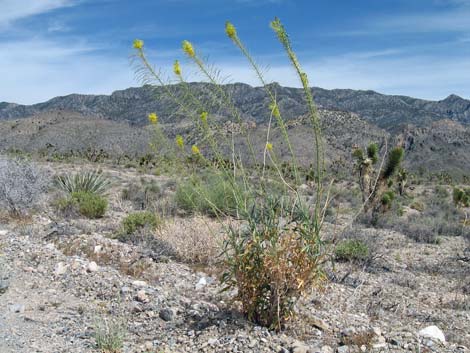 |
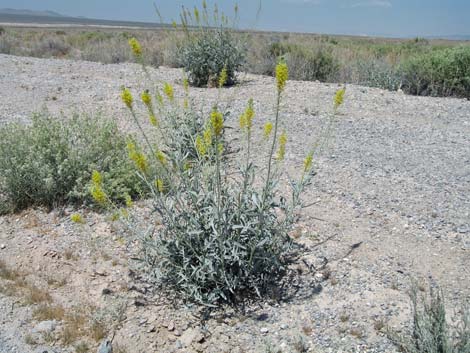 |
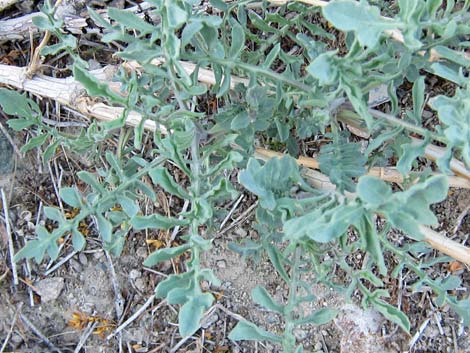 Lower leaves highly dissected |
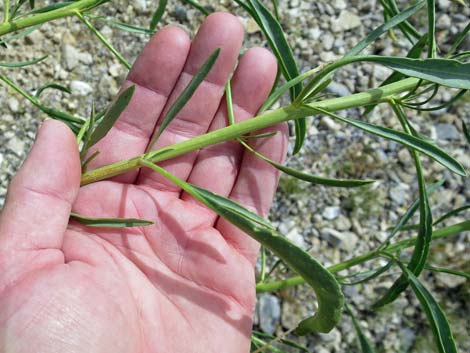 Upper leaves long and narrow |
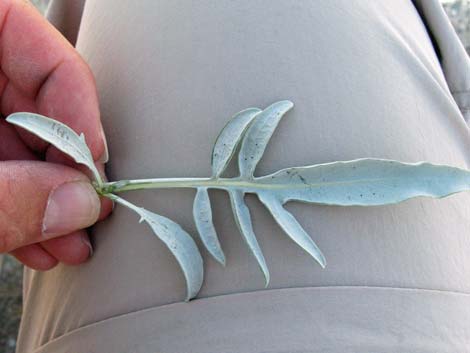 Basal leaves highly dissected (dorsal surface) |
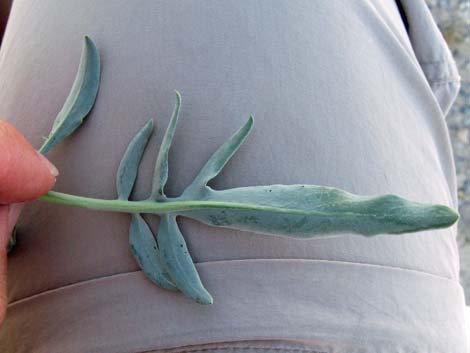 Basal leaves highly dissected (ventral surface) |
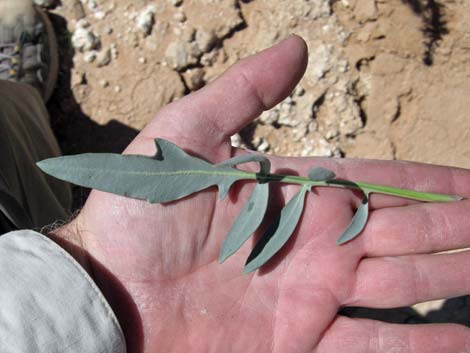 Basal leaves highly dissected |
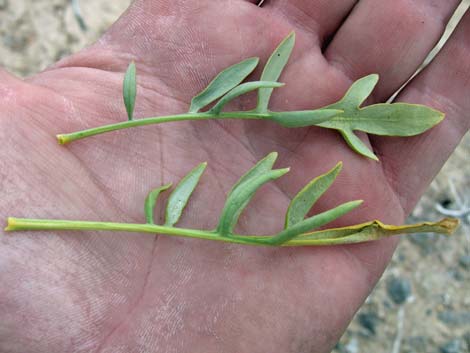 Basal leaves highly dissected |
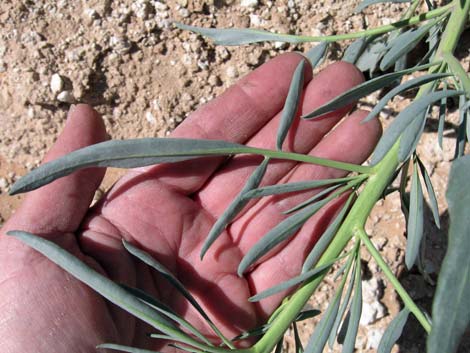 Upper leaves entire to few lobes |
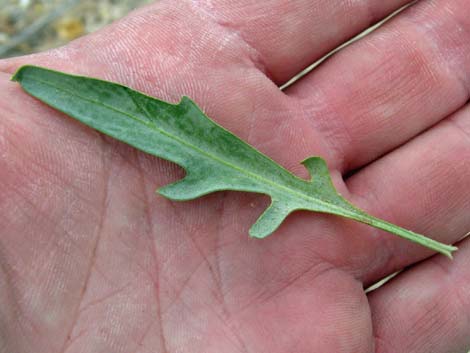 Upper leaves entire to few lobes |
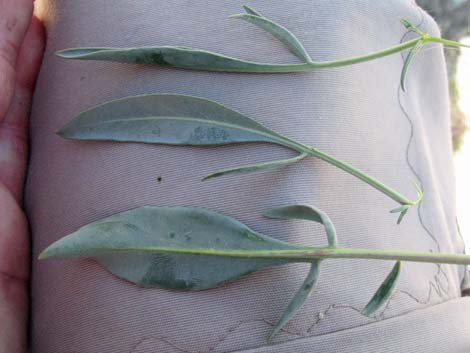 Upper leaves entire to few lobes |
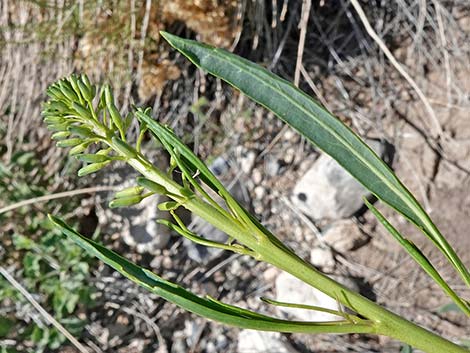 Leaves usually smooth, without hairs |
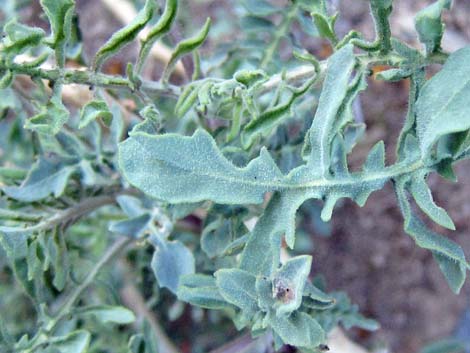 Typically smooth, leaves can have short prickles |
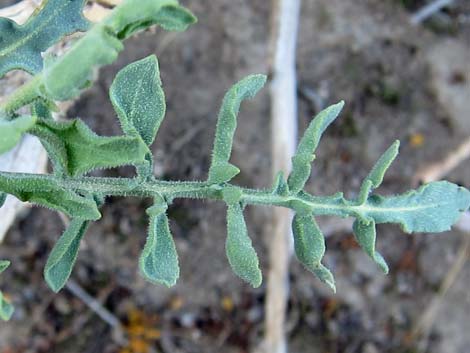 Typically smooth, leaves can have short prickles |
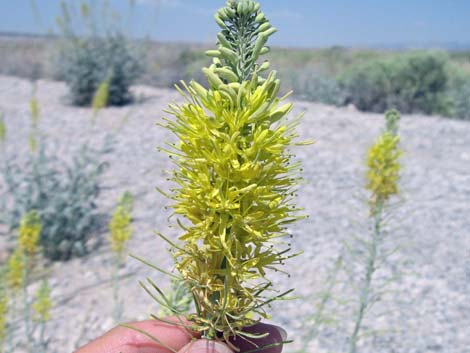 Inflorescence: dense buds and yellow flowers |
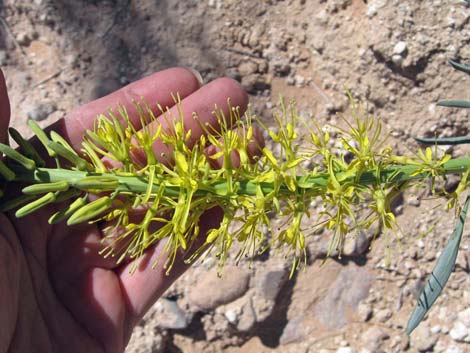 Inflorescence: dense buds and yellow flowers |
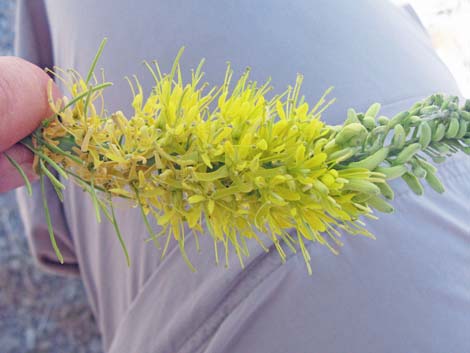 Inflorescence: dense buds and yellow flowers |
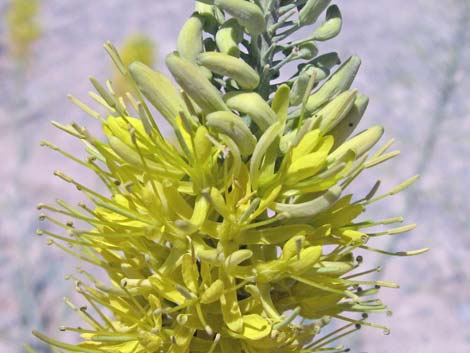 Inflorescence: dense buds and yellow flowers |
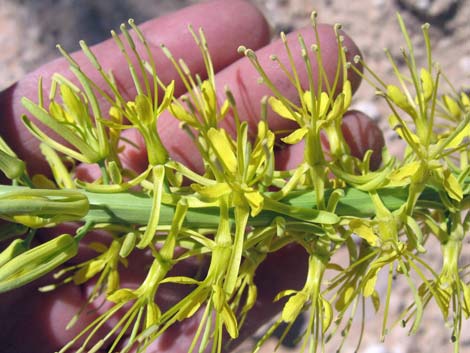 Flowers with long sepals, long petals, and long (11–28 mm) filaments |
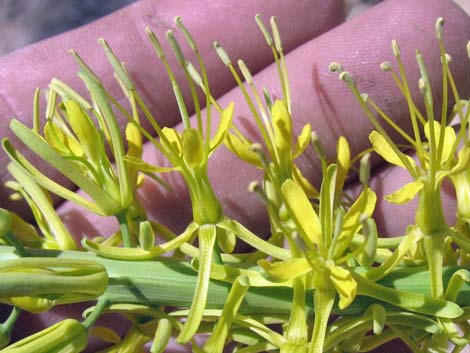 Flowers with long sepals, long petals, and long (11–28 mm) filaments |
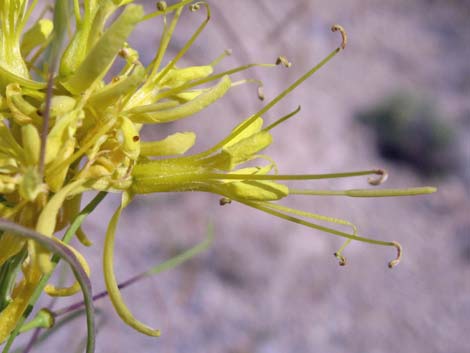 Flowers with long sepals, long petals, and long (11–28 mm) filaments |
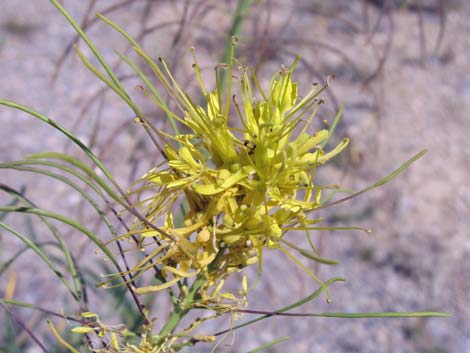 Last of the flowers, plus developing fruits |
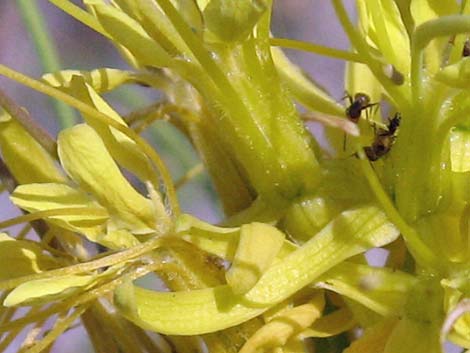 Petal claws hairy |
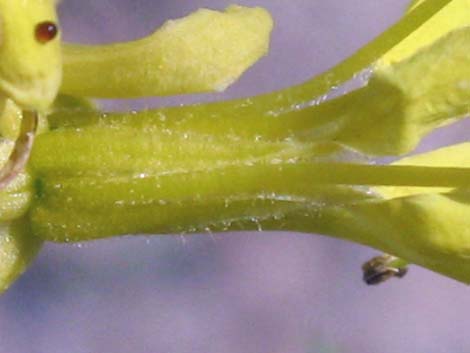 Petal claws hairy |
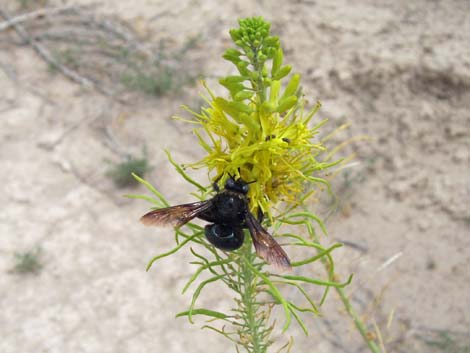 Carpenter Bee feeding on Princesplume nectar |
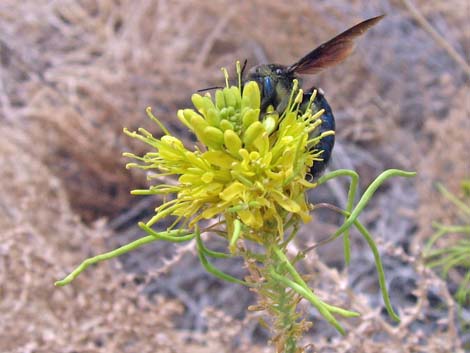 Carpenter Bee feeding on Princesplume nectar |
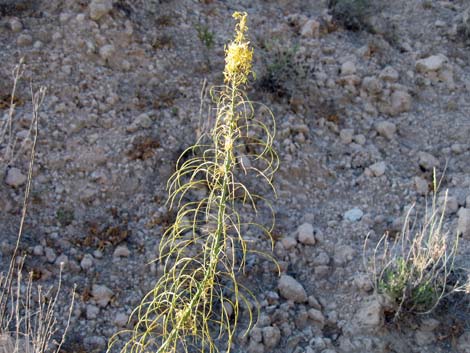 Developing seedpods |
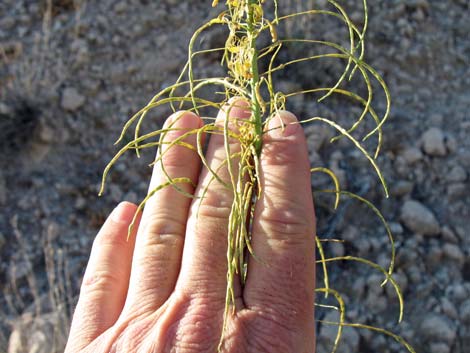 Developing seedpods |
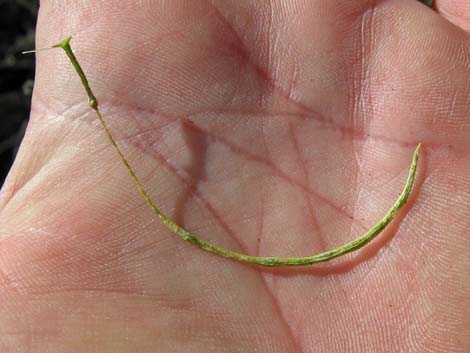 Ripe seedpod: long and thin |
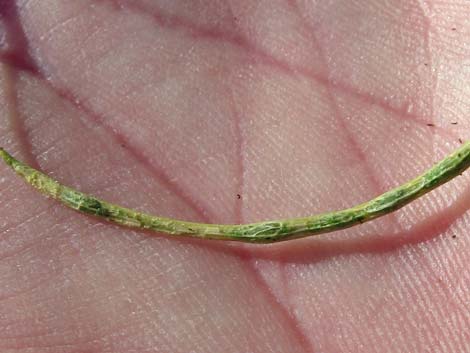 Ripe seedpod: long and thin |
Note: All distances, elevations, and other facts are approximate. Names generally follow the USDA database.
![]() ; Last updated 240629
; Last updated 240629
| All Shrubs | Plant Species Index | Glossary | Copyright, Conditions, Disclaimer | Home |